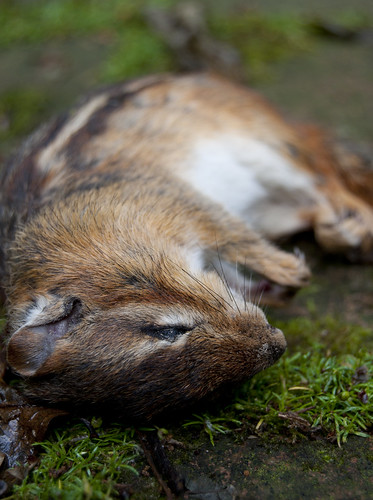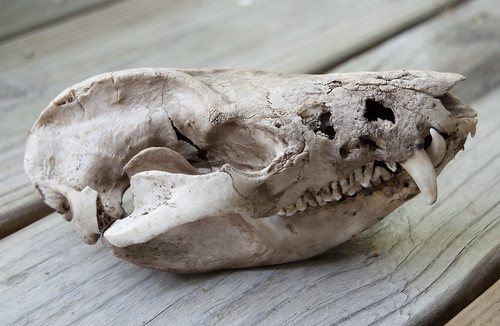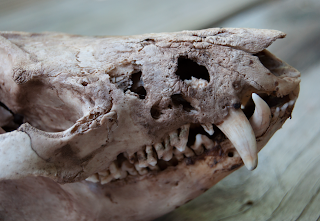
After the beetle activity died down, I removed the skull from my parents' backyard and placed it in a bucket full of water and dish soap. This process, known as degreasing, eliminates fats and other oils from the bone. Every few days, I changed the water and soap. It was fascinating to see the fat slowly drawn from the skull; it would exude from the bone, forming little piles that looked an awful lot like Crisco. This went on for a few weeks, and it was a stinky operation. Finally, enough of the fat had been eliminated and it was time for the whitening process. Since bleach ruins bone, I used a very diluted mixture of water and hydrogen peroxide. It only took a day or two, but it worked wonders, turning the skull a nice off-white color.
March Buck's skull, which had been submerged for about a month, could finally dry. I glued the incisors back into place, then glued the two halves of the jaw back together.
As far as skulls go, this one's relatively typical. The only abnormality is the left pedicle, which is a bit deformed. It also appears as if March Buck was getting ready to shed his antlers.
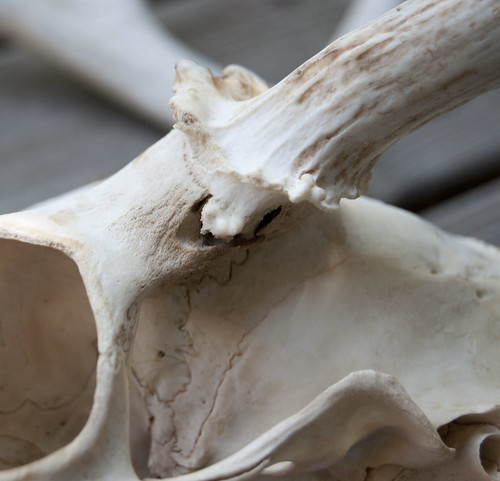
March Buck's skull, which had been submerged for about a month, could finally dry. I glued the incisors back into place, then glued the two halves of the jaw back together.
As far as skulls go, this one's relatively typical. The only abnormality is the left pedicle, which is a bit deformed. It also appears as if March Buck was getting ready to shed his antlers.

I also kept the black plastic ring that was found strangling one of the buck's front feet.
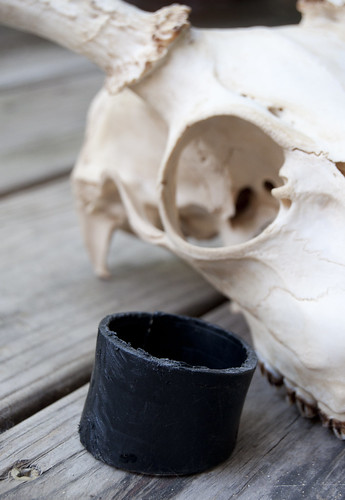

And now, an announcement -- Steph and I are moving back to Marquette! We're both extremely excited about this; while Ann Arbor treated us alright, we found we truly missed our friends as well as the Upper Peninsula's landscape. We'll be relocating in less than a month, moving into a small house with a riverfront view. I can't wait to find out what animals we'll see, and I'll certainly continue this project -- in the place where it started.


